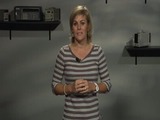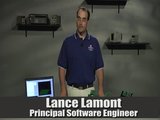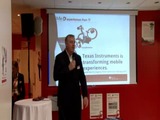Latest Videos
Engineering TV : Most Recent >>
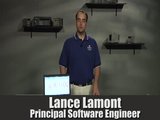 This video introduces the Microchip AR1100 Analog Resistive Touch Screen controller development kit, DV102012. It presents some of the unique and powerful capabilities of the AR1100 controller, including support for 4, 5, and 8 wire analog resistive sensors and advanced filtering algorithms which allows the controller to provide good, filtered coordinates.
This video introduces the Microchip AR1100 Analog Resistive Touch Screen controller development kit, DV102012. It presents some of the unique and powerful capabilities of the AR1100 controller, including support for 4, 5, and 8 wire analog resistive sensors and advanced filtering algorithms which allows the controller to provide good, filtered coordinates.
 This video introduces the Microchip AR1100 Analog Resistive Touch Screen controller development kit, DV102012. It presents some of the unique and powerful capabilities of the AR1100 controller, including support for 4, 5, and 8 wire analog resistive sensors and advanced filtering algorithms which allows the controller to provide good, filtered coordinates.
This video introduces the Microchip AR1100 Analog Resistive Touch Screen controller development kit, DV102012. It presents some of the unique and powerful capabilities of the AR1100 controller, including support for 4, 5, and 8 wire analog resistive sensors and advanced filtering algorithms which allows the controller to provide good, filtered coordinates.
Engineering TV : Most Recent >>
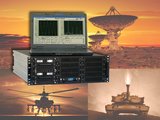 Rodger Hosking, Vice President of Pentek, showcases their first entry in a planned series of signal processing instruments targeted at unmanned and airborne vehicles that operate in harsh environments. The RTR 2746 can stream data to and from a RAID array (up to 24 terabytes of storage) at 1.6 GB per second. A remote operator can access the collected data in Pentek's SystemFlow software for point-and-click system control and operation.
Rodger Hosking, Vice President of Pentek, showcases their first entry in a planned series of signal processing instruments targeted at unmanned and airborne vehicles that operate in harsh environments. The RTR 2746 can stream data to and from a RAID array (up to 24 terabytes of storage) at 1.6 GB per second. A remote operator can access the collected data in Pentek's SystemFlow software for point-and-click system control and operation.
 Rodger Hosking, Vice President of Pentek, showcases their first entry in a planned series of signal processing instruments targeted at unmanned and airborne vehicles that operate in harsh environments. The RTR 2746 can stream data to and from a RAID array (up to 24 terabytes of storage) at 1.6 GB per second. A remote operator can access the collected data in Pentek's SystemFlow software for point-and-click system control and operation.
Rodger Hosking, Vice President of Pentek, showcases their first entry in a planned series of signal processing instruments targeted at unmanned and airborne vehicles that operate in harsh environments. The RTR 2746 can stream data to and from a RAID array (up to 24 terabytes of storage) at 1.6 GB per second. A remote operator can access the collected data in Pentek's SystemFlow software for point-and-click system control and operation.
Hosted by: Bill Wong Videography by: Curtis Ellzey Edited by: Curtis Ellzey
Engineering TV : Most Recent >>
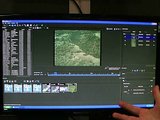 At AUVSI Unmanned Systems 2011, 2d3 Sensing debuted the latest version of their Tungsten 3.0 real-time digital media solution, ideal for processing and analyzing full motion video for intelligence and surveillance applications. Tungsten 3.0 SDK (Software Development Kit) leverages the computer vision and full motion video expertise of 2d3 as well as the field-deployed and combat-proven Tungsten media management capabilities from recently acquired Sensing Systems. Jon Damush, President of 2d3 Sensing, highlights the new release as well as their TacitView and Catalina technologies.
At AUVSI Unmanned Systems 2011, 2d3 Sensing debuted the latest version of their Tungsten 3.0 real-time digital media solution, ideal for processing and analyzing full motion video for intelligence and surveillance applications. Tungsten 3.0 SDK (Software Development Kit) leverages the computer vision and full motion video expertise of 2d3 as well as the field-deployed and combat-proven Tungsten media management capabilities from recently acquired Sensing Systems. Jon Damush, President of 2d3 Sensing, highlights the new release as well as their TacitView and Catalina technologies.
 At AUVSI Unmanned Systems 2011, 2d3 Sensing debuted the latest version of their Tungsten 3.0 real-time digital media solution, ideal for processing and analyzing full motion video for intelligence and surveillance applications. Tungsten 3.0 SDK (Software Development Kit) leverages the computer vision and full motion video expertise of 2d3 as well as the field-deployed and combat-proven Tungsten media management capabilities from recently acquired Sensing Systems. Jon Damush, President of 2d3 Sensing, highlights the new release as well as their TacitView and Catalina technologies.
At AUVSI Unmanned Systems 2011, 2d3 Sensing debuted the latest version of their Tungsten 3.0 real-time digital media solution, ideal for processing and analyzing full motion video for intelligence and surveillance applications. Tungsten 3.0 SDK (Software Development Kit) leverages the computer vision and full motion video expertise of 2d3 as well as the field-deployed and combat-proven Tungsten media management capabilities from recently acquired Sensing Systems. Jon Damush, President of 2d3 Sensing, highlights the new release as well as their TacitView and Catalina technologies.
Hosted by: Bill Wong Videography by: Curtis Ellzey Edited by: Curtis Ellzey
Engineering TV : Most Recent >>
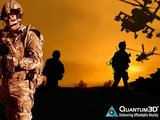 The latest commercial-off-the-shelf, open-architecture, real-time visual computing solutions from Quantum3D were represented at AUVSI Unmanned Systems 2011. The Thermite XVG 4000 is a ruggedized graphics processing powerhouse, and the Thermite TL 2000 is the lightest and smallest of their embedded systems, ideal for man-wearable applications and robotics.
The latest commercial-off-the-shelf, open-architecture, real-time visual computing solutions from Quantum3D were represented at AUVSI Unmanned Systems 2011. The Thermite XVG 4000 is a ruggedized graphics processing powerhouse, and the Thermite TL 2000 is the lightest and smallest of their embedded systems, ideal for man-wearable applications and robotics.
 The latest commercial-off-the-shelf, open-architecture, real-time visual computing solutions from Quantum3D were represented at AUVSI Unmanned Systems 2011. The Thermite XVG 4000 is a ruggedized graphics processing powerhouse, and the Thermite TL 2000 is the lightest and smallest of their embedded systems, ideal for man-wearable applications and robotics.
The latest commercial-off-the-shelf, open-architecture, real-time visual computing solutions from Quantum3D were represented at AUVSI Unmanned Systems 2011. The Thermite XVG 4000 is a ruggedized graphics processing powerhouse, and the Thermite TL 2000 is the lightest and smallest of their embedded systems, ideal for man-wearable applications and robotics.
Hosted by: Bill Wong Videography by: Curtis Ellzey Edited by: Curtis Ellzey
Engineering TV : Most Recent >>
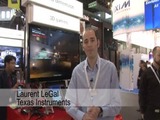 See the custom and popular games that run on TI�s Blaze mobile development platform, with an autostereoscopic 3D screen or in high definition stereoscopic S3D TV connected to the Blaze MDP via HDMI. TI's OMAP game engine partners include Stonetrip, and Hi Corp, as well as game publisher Gameloft and Hi Corp.
See the custom and popular games that run on TI�s Blaze mobile development platform, with an autostereoscopic 3D screen or in high definition stereoscopic S3D TV connected to the Blaze MDP via HDMI. TI's OMAP game engine partners include Stonetrip, and Hi Corp, as well as game publisher Gameloft and Hi Corp.
 See the custom and popular games that run on TI�s Blaze mobile development platform, with an autostereoscopic 3D screen or in high definition stereoscopic S3D TV connected to the Blaze MDP via HDMI. TI's OMAP game engine partners include Stonetrip, and Hi Corp, as well as game publisher Gameloft and Hi Corp.
See the custom and popular games that run on TI�s Blaze mobile development platform, with an autostereoscopic 3D screen or in high definition stereoscopic S3D TV connected to the Blaze MDP via HDMI. TI's OMAP game engine partners include Stonetrip, and Hi Corp, as well as game publisher Gameloft and Hi Corp.
Engineering TV : Most Recent >>
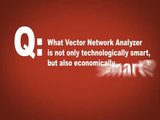 The Anritsu VectorStar: Broadest frequency coverage from 70 kHz to 70 Ghz, widest dynamic range, fastest measurement speed, plus...expandability. Frequency range upgrades to 110 GHz and beyond, two-port to multiport upgrades, linear to non-linear measurement upgrades. Smart now. Smart later.
Learn more about the new Broadband VectorStar ME7838A at:
http://www.anritsu.com/en-US/Products-Solutions/Products/ME7838A.aspx
The Anritsu VectorStar: Broadest frequency coverage from 70 kHz to 70 Ghz, widest dynamic range, fastest measurement speed, plus...expandability. Frequency range upgrades to 110 GHz and beyond, two-port to multiport upgrades, linear to non-linear measurement upgrades. Smart now. Smart later.
Learn more about the new Broadband VectorStar ME7838A at:
http://www.anritsu.com/en-US/Products-Solutions/Products/ME7838A.aspx
 The Anritsu VectorStar: Broadest frequency coverage from 70 kHz to 70 Ghz, widest dynamic range, fastest measurement speed, plus...expandability. Frequency range upgrades to 110 GHz and beyond, two-port to multiport upgrades, linear to non-linear measurement upgrades. Smart now. Smart later.
Learn more about the new Broadband VectorStar ME7838A at:
http://www.anritsu.com/en-US/Products-Solutions/Products/ME7838A.aspx
The Anritsu VectorStar: Broadest frequency coverage from 70 kHz to 70 Ghz, widest dynamic range, fastest measurement speed, plus...expandability. Frequency range upgrades to 110 GHz and beyond, two-port to multiport upgrades, linear to non-linear measurement upgrades. Smart now. Smart later.
Learn more about the new Broadband VectorStar ME7838A at:
http://www.anritsu.com/en-US/Products-Solutions/Products/ME7838A.aspx
